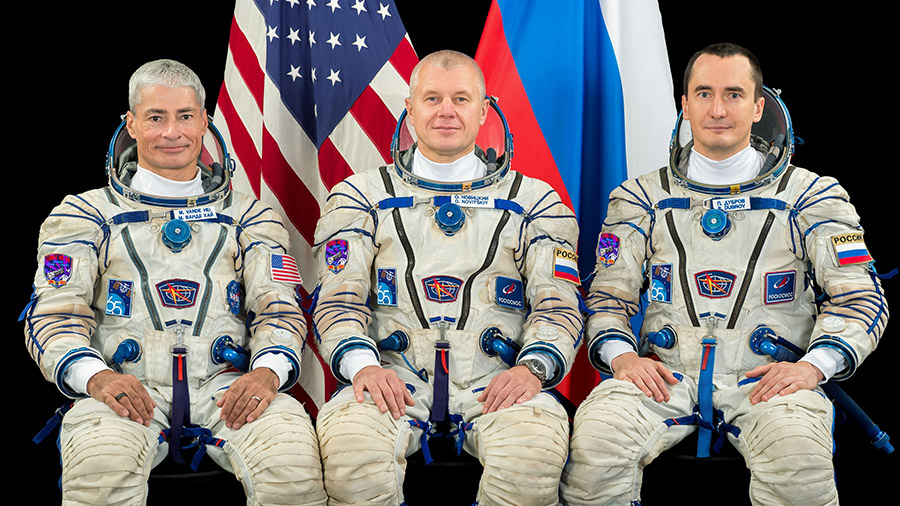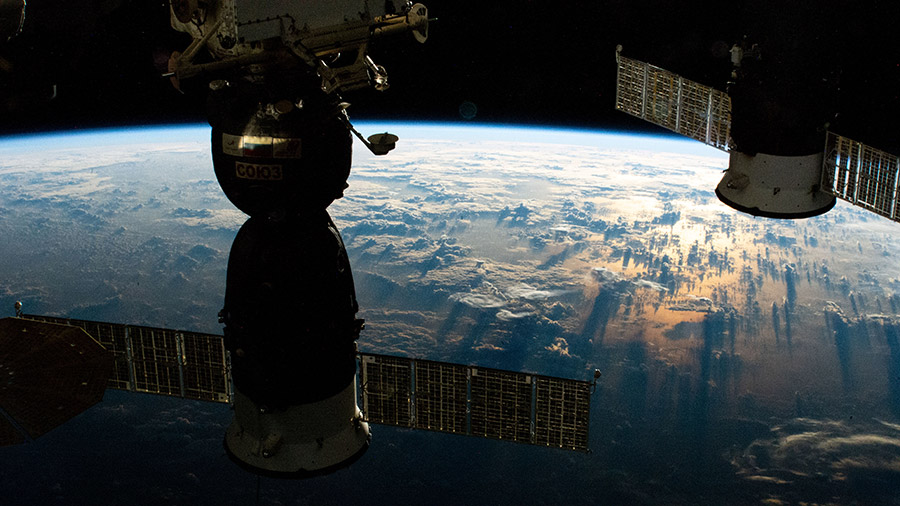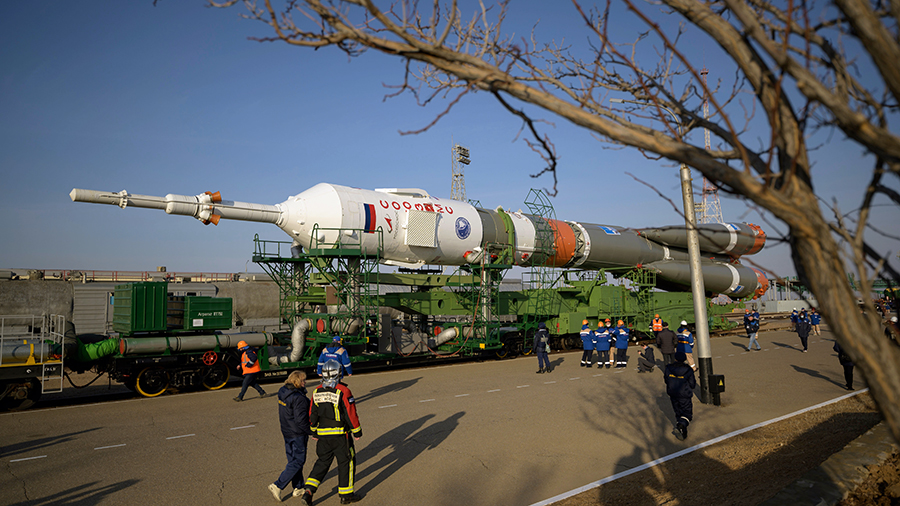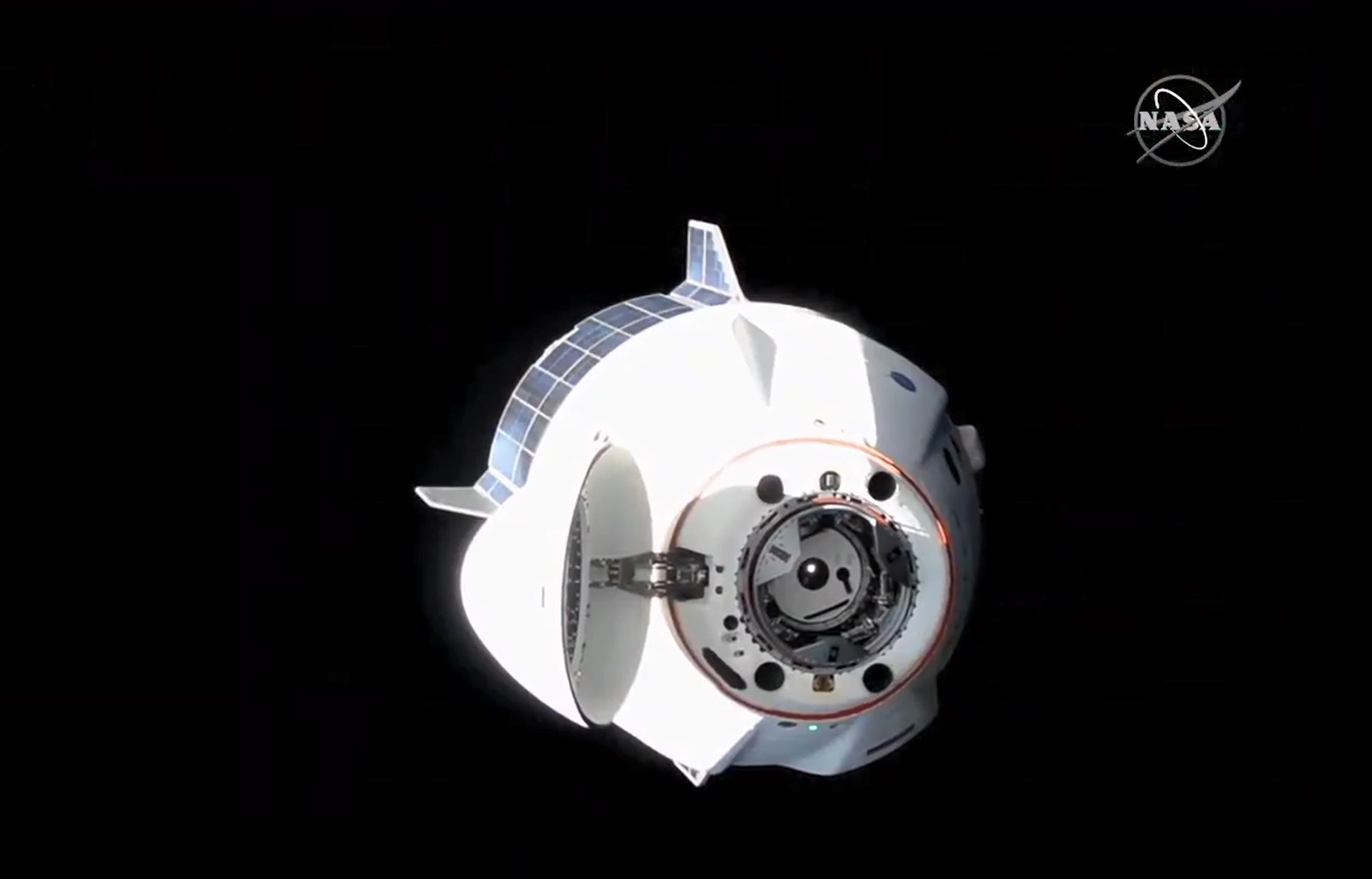NASA TV Broadcasts Friday Launch to Station on Soyuz Crew Ship

A trio of space travelers, including NASA astronaut Mark Vande Hei, is scheduled to launch aboard the Soyuz MS-18 spacecraft from the Baikonur Cosmodrome in Kazakhstan to the International Space Station at 3:42 a.m. EDT (12:42 p.m. Kazakhstan time) Friday, April 9.
Beginning at 2:45 a.m., NASA Television, the agency’s website, and the NASA app will provide live coverage of the crew’s launch. Teams at the Baikonur Cosmodrome in Kazakhstan are making final preparations for the liftoff of Vande Hei and Russian cosmonauts Oleg Novitskiy and Pyotr Dubrov.
The launch will send the crew members on a two-orbit, three-hour journey to the space station, where they will join the Expedition 64 crew, temporarily increasing the orbiting laboratory’s population to 10 people.
They will join NASA Flight Engineer Kate Rubins, who arrived on the station with Commander Sergey Ryzhikov and Flight Engineer Sergey Kud-Sverchkov of Roscosmos in October 2020, and the crew of the SpaceX Crew Dragon Resilience – NASA astronauts Michael Hopkins, Victor Glover, and Shannon Walker, as well as Japan Aerospace Exploration Agency (JAXA) astronaut Soichi Noguchi – who have been in orbit since November.
It will be the second spaceflight for Vande Hei, the third for Novitskiy, and the first for Dubrov. The launch comes three days before the 60th anniversary of cosmonaut Yuri Gagarin’s launch to become the first human in space and the 40th anniversary of the first launch of NASA’s space shuttle.
During their six-month mission, the Expedition 65 crew will continue work on hundreds of experiments in biology, biotechnology, physical science, and Earth science aboard the International Space Station, humanity’s only permanently occupied microgravity laboratory. Work on the unique microgravity laboratory advances scientific knowledge and demonstrates new technologies, making research breakthroughs that will enable long-duration human and robotic exploration of the Moon and Mars.
Below is the crew’s launch timeline in EDT:
April 8 EDT L-Hr/M/Sec Event
18:05:41pm 9:37:00 Crew wakeup at Cosmonaut Hotel (time appx)
21:05:41pm 6:37:00 Crew departs Cosmonaut Hotel (time appx)
21:50:41pm 5:52:00 Crew arrives at Site 254
21:57:41pm 5:45:00 Batteries installed in booster
22:35:41pm 5:07:00 Crew suit up
22:42:41pm 5:00:00 Tanking begins
23:37:41pm 4:05:00 Booster loaded with liquid oxygen; crew meets with officials
23:56:41pm 3:46:00 Crew walkout from 254; boards bus for the launch pad
April 9 EDT
00:01:41am 3:41:00 Crew departs for launch pad at Site 31
00:37:41am 3:05:00 First and second stage oxygen fueling complete
01:11:41am 2:31:00 Crew arrives at launch pad at site 31
01:17:41am 2:25:00 Crew boards Soyuz; strapped in to the Descent module
02:07:41am 1:35:00 Descent module hardware tested
02:22:41am 1:20:00 Hatch closed; leak checks begin
02:42:41am 1:00:00 Launch vehicle control system prep; gyro activation
02:45:00am :57:41 NASA TV LAUNCH COVERAGE BEGINS
02:57:41am :45:00 Pad service structure components lowered
02:58:41am :44:00 Clamshell gantry service towers retracted
03:05:00am :37:41 NASA TV: Crew pre-launch activities played (B-roll)
03:05:41am :37:00 Suit leak checks begin; descent module testing complete
03:08:41am :34:00 Emergency escape system armed
03:27:41am :15:00 Suit leak checks complete; escape system to auto
03:32:41am :10:00 Gyros in flight readiness and recorders activated
03:35:41am :07:00 Pre-launch operations complete
03:36:41am :06:00 Launch countdown operations to auto; vehicle ready
03:37:41am :05:00 Commander’s controls activated
03:38:41am :04:00 Combustion chamber nitrogen purge
03:39:41am :03:00 Propellant drainback
03:39:58am :02:43 Booster propellant tank pressurization
03:41:11am :01:30 Ground propellant feed terminated
03:41:41am :01:00 Vehicle to internal power
03:42:06am :00:35 First umbilical tower separates
Auto sequence start
03:42:11am :00:30 Ground umbilical to third stage disconnected
03:42:26am :00:15 Second umbilical tower separates
03:42:29am :00:12 Launch command issued
Engine Start Sequence Begins
03:42:31am :00:10 Engine turbopumps at flight speed
03:42:36am :00:05 Engines at maximum thrust
03:42:41am :00:00 LAUNCH OF SOYUZ MS-18 TO THE ISS
03:43:23am +:00:42 ISS FLIES OVER THE BAIKONUR COSMODROME
03:51:27am +8:46 Third stage separation and orbital insertion for the Soyuz MS-18 spacecraft
For launch coverage and more information about the mission, visit: https://blogs.nasa.gov/spacestation/. Get space station news, images and features via social media on Instagram at: @iss, ISS on Facebook, and on Twitter @Space_Station and @ISS_Research.
Mark Garcia
Powered by WPeMatico







